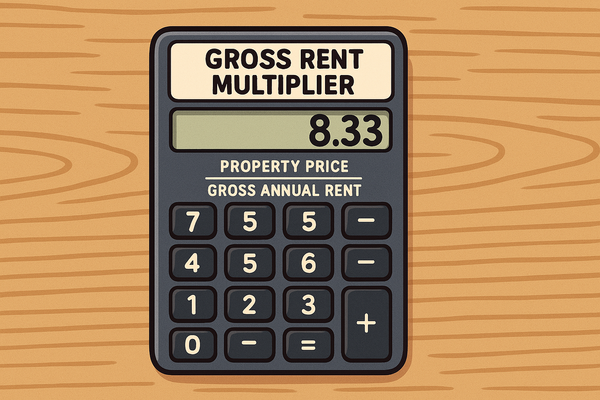Ohio Squatters Rights Guide: Understanding Adverse Possession Laws
Ohio's adverse possession doctrine allows unauthorized occupants to gain legal title to property after 21 years of continuous possession meeting specific legal criteria.

From the not-so-secret Ohio State University basement dweller who lived undetected for over a month, to the dramatic underwear-clad squatter in Scioto County who nearly drowned a deputy during an escape attempt, Ohio has seen its share of bizarre unauthorized occupations.
These headline-grabbing cases highlight why understanding Ohio's strict adverse possession laws is critical for property owners hoping to protect their real estate from both brazen trespassers and subtle boundary encroachments alike.
Introduction to Squatters' Rights in Ohio
- Definition of squatters vs. trespassers in Ohio: Under Ohio law, a trespasser is someone who enters property without permission for a brief period, while a squatter is an unauthorized occupant who remains on the property continuously for an extended time with the potential to claim legal ownership through adverse possession.
- Basic overview of adverse possession in Ohio: Ohio's adverse possession doctrine allows unauthorized occupants to gain legal title to property after 21 years of continuous possession meeting specific legal criteria.
- Why property owners should understand these laws: Knowledge of Ohio squatters rights protects property ownership and prevents loss of valuable real estate through adverse possession claims.
- Historical purpose of adverse possession laws: These laws originally encouraged productive land use and resolved boundary disputes when property records were less reliable.
Squatter Snippet: Real Case from Ohio
In 2022, a Portage County case known as McMullen v. Wyatt demonstrated the reality of adverse possession in Ohio. The dispute involved a garage that encroached onto neighboring property. McMullen had used the garage as a recreation/living room since 1998, while Wyatt, despite being aware of the encroachment since 2007, had taken no legal action.
The Ohio courts found in favor of McMullen, establishing that all elements of adverse possession had been met. This case highlights why understanding Ohio's squatter laws is critical for property owners, as even partial encroachments maintained over time can result in legal transfer of property rights.
Key Timeline: Statutory Period in Ohio
- Required occupation period: 21 years in Ohio – one of the longest in the nation
- Continuous possession requirement: Occupation without significant gaps for the entire statutory period
- Comparison with neighboring states:
- Kentucky: 15 years
- Michigan: 15 years
- Pennsylvania: 21 years
- Indiana: 10 years
- Timeline exceptions:
- Legal disability may toll the statutory period
- Property owned by government entities generally cannot be claimed through adverse possession
CHART: Adverse Possession Timeline Comparison
| State | Required Years | Special Conditions |
|---|---|---|
| Ohio | 21 years | Clear and convincing evidence standard |
| Kentucky | 15 years | Color of title may reduce to 7 years |
| Michigan | 15 years | Payment of property taxes strengthens claim |
| Pennsylvania | 21 years | 10 years with color of title |
| Indiana | 10 years | Payment of taxes for 10 years required |
Quick Guide for Property Owners
Ohio's approach to adverse possession is among the strictest in the nation, requiring unauthorized occupants to maintain possession for a full 21 years before they can claim legal title. However, recent cases highlight that even partial property encroachments can result in successful adverse possession claims.
Most surprisingly, contrary to popular belief, the typical adverse possession case in Ohio doesn't involve squatters occupying vacant buildings, but rather neighboring landowners using property beyond their legal boundaries.
- Know your timeline: Squatters can claim rights after 21 years of continuous occupation in Ohio
- Documentation matters: Keep property records, tax receipts, and inspection logs
- Regular monitoring required: Vacant properties are most vulnerable to unauthorized occupation
- Legal obligation: Self-help eviction methods are illegal in Ohio under ORC Section 5321.15
- Act quickly: The longer squatters remain, the stronger their potential claim to adverse possession
- Proper notices: Follow legal procedures when removing unauthorized occupants
Prevention: Protecting Your Property
In Ohio, the most common scenarios for adverse possession involve boundary disputes with adjacent property owners rather than complete occupation of vacant buildings. Ohio courts give significant weight to evidence of property monitoring and security measures when evaluating adverse possession claims.
According to Ohio case law, property owners who regularly inspect their land and maintain clear boundary markers are much more likely to defeat adverse possession claims.
- Regular inspections:
- Visit property at least quarterly
- Document each visit with photos/notes
- Pay special attention to boundary areas
- Effective security measures:
- Secure all entry points
- Consider alarm systems
- Install motion-activated lighting
- Maintain clear "No Trespassing" signage
- Clear signage:
- Post "No Trespassing" signs visibly
- Mark property boundaries clearly
- Update signs regularly to show active management
- Property management options:
- Hire professional management for vacant properties
- Consider rental options for long-term vacancies
- Documentation practices:
- Keep tax payment records
- Maintain utility connections
- Take dated photographs regularly
- Preserve property surveys showing exact boundaries
CHART: Property Risk Assessment Matrix
| Property Type | Risk Level | Recommended Prevention | Estimated Cost |
|---|---|---|---|
| Vacant Land | High | Boundary markers, regular inspections, clear signage | $500-$2,000 |
| Abandoned Building | High | Security system, property management, changed locks | $1,000-$5,000 |
| Seasonal Property | Medium | Regular inspections, neighbor monitoring, security system | $800-$3,000 |
| Investment Property | Medium | Professional management, tenant screening, security measures | $1,200-$4,000 |
Removing Squatters: Step-by-Step Process
Ohio's eviction process for unauthorized occupants follows specific legal procedures outlined in Ohio Revised Code. Unlike states with expedited squatter removal laws, Ohio currently requires property owners to pursue formal eviction through the courts.
Notably, pending House Bills 478 (sponsored by Representatives LaRe and Jay Edwards) and 480 (sponsored by Representatives Young and Demetriou) would create an expedited process allowing property owners to request county sheriffs to "immediately remove a person who unlawfully occupies a residential premises" if passed.
- Document the situation:
- Take photos/video of occupation
- Gather ownership documents including property deed and tax records
- Document any property damage
- Issue proper written notice to vacate
- While not legally required before filing an eviction lawsuit, a 30-day notice is customary
- File appropriate legal complaint:
- Forcible entry and detainer action in local municipal or county court
- Include all required documentation proving ownership
- Attend court hearing
- If successful, obtain eviction judgment
- Sheriff enforces removal, not property owner
- What NOT to do:
- Do not change locks yourself
- Do not shut off utilities
- Do not remove squatter's belongings
- Do not threaten or intimidate
- Do not use physical force
- Violations of Ohio Revised Code Section 5321.15 can result in civil liability
- Timeline expectations:
- Notice period: 30 days (customary but not required)
- Court processing: 2-4 weeks
- Eviction enforcement: 3-10 days after judgment
CHART: Eviction Process Timeline
Ohio's eviction process is governed by Ohio Revised Code Chapter 1923, which establishes specific waiting periods between steps.
According to Ohio court data, the state's eviction process is considered "one of the fastest in the country," typically taking 4-8 weeks from initial filing to enforcement. In some jurisdictions like Columbus, cases may be expedited if the property owner can demonstrate clear unauthorized occupation.
[Discovery of Squatter] → [Documentation: 1-2 days] → [Notice to Vacate: 30 days] →
[Court Filing: 1 day] → [Waiting for Hearing: 2-4 weeks] → [Court Hearing: 1 day] →
[If successful, Wait for Order: 3-5 days] → [Sheriff Enforcement: 3-10 days] → [Property Returned]
Total estimated timeline: 5-8 weeks
Legal Requirements for Adverse Possession
Ohio courts apply the "OCEAN" framework (Open, Continuous, Exclusive, Adverse, and Notorious) to evaluate adverse possession claims. The Ohio Supreme Court established in Grace v. Koch (1998) that all elements must be proven by "clear and convincing evidence," a higher standard than the typical civil case requirement of preponderance of evidence. This elevated standard reflects Ohio's conservative approach to transferring property rights through adverse possession.
- Hostile/Adverse Claim
- Under Ohio law, possession must occur without the permission of the true owner
- If the legal owner gives permission for the use, adverse possession cannot be claimed
- Ohio courts apply an "objective standard" focusing on the nature of the possession
- Actual Possession
- Physical occupation of the property is required
- Must use property as a true owner would
- Evidence includes maintenance, improvements, and regular use
- Open and Notorious Possession
- Use must be visible and apparent to the community
- Occupation must be obvious during reasonable inspection
- Secret or hidden use does not qualify
- Exclusive Possession
- Must maintain sole control of the property
- Must exclude both the record owner and third parties
- Shared possession with the true owner defeats this element
- Continuous Possession
- Uninterrupted for the full 21-year statutory period
- Ohio law permits "tacking" (combining successive possessors' time)
- If the rightful owner temporarily reclaims the land, the continuity is broken
CHART: Adverse Possession Requirements Matrix
| Requirement | Required in Ohio? | Evidence Courts Accept | Common Pitfalls |
|---|---|---|---|
| Hostile/Adverse | Yes | No permission documentation, visible boundary disputes | Permission granted at any point breaks claim |
| Actual Possession | Yes | Maintenance records, construction, improvements | Occasional or sporadic use insufficient |
| Open & Notorious | Yes | Neighbor testimony, visible use, community awareness | Hidden or secretive use invalidates claim |
| Exclusive | Yes | Sole control, excluding others including legal owner | Shared use with owner defeats claim |
| Continuous | Yes | 21 years without interruption, tacking permitted | Breaks in possession reset the clock |
Frequently Asked Questions
- "Can I remove squatters myself?"
- No, self-help eviction is illegal in Ohio under ORC Section 5321.15
- Property owners must follow legal eviction process
- "Do squatters have to pay property taxes in Ohio?"
- Tax payment is not explicitly required for adverse possession in Ohio
- However, paying taxes strengthens an adverse possession claim by demonstrating ownership behavior
- "What's the difference between a squatter and a trespasser in Ohio?"
- Trespassers: Short-term unauthorized presence without intent to claim ownership
- Squatters: Ongoing occupation with potential adverse possession claim
- "Who should I contact first - police or sheriff?"
- For immediate safety concerns: Police
- For eviction enforcement: Sheriff
- "Can squatters claim abandoned property in Ohio?"
- Yes, if all adverse possession requirements are met for 21 years
- Abandonment may actually strengthen their claim by making exclusive possession easier
- "How quickly can I evict a squatter in Ohio?"
- Typical timeline: 4-8 weeks
- Factors affecting timeline: court schedule, evidence quality
- Pending legislation may create expedited process if passed
CHART: Decision Tree for Property Owners
Ohio's distinction between criminal trespass and civil squatting situations informs appropriate responses. Under Ohio law, recent entry (less than 48 hours) may be treated as criminal trespass allowing immediate police intervention, while established occupation requires civil eviction procedures.
Local law enforcement agencies often have specific protocols for responding to unauthorized occupants based on evidence of duration of stay.
Discovered Someone on Your Property
├── Emergency/Dangerous Situation? → Yes → Call Police
│ └── No ↓
├── Recent Entry (Less than 48 hours)? → Yes → Call Police (Trespasser)
│ └── No ↓
├── Evidence of Established Occupation? → Yes → Legal Eviction Process Required
│ └── No ↓
└── Uncertain Situation → Consult Legal Professional Before Taking Action
Recent Legislative Changes in Ohio
As of March 2025, Ohio has seen significant legislative activity addressing squatters' rights. House Bill 478 (sponsored by Representatives LaRe and Jay Edwards) and House Bill 480 (sponsored by Representatives Young and Demetriou) were introduced in April 2024. Both contain nearly identical provisions designed to combat squatting and streamline removal processes.
These bills would create an expedited process allowing property owners to request county sheriffs to "immediately remove a person who unlawfully occupies a residential premises," bypassing the current requirement for a formal eviction lawsuit in many cases.
- Recently Proposed Laws:
- House Bills 478 and 480: Introduced April 2024, these bills would create expedited squatter removal processes
- Impact on property owners: Would allow direct sheriff intervention rather than requiring court eviction
- Proposed enforcement: Would criminalize squatting as a first-degree misdemeanor, or fourth-degree felony if property damage exceeds $5,000
- Both bills contain emergency clauses that would allow them to take immediate effect if passed
- Legislative Trends:
- Ohio is moving toward stronger property owner protections against squatters
- This aligns with national trends as several states have recently strengthened anti-squatting measures
- The Ohio Supreme Court continues to uphold the 21-year statutory period for adverse possession claims
State-Specific Considerations
- Burden of proof requirements:
- Ohio requires "clear and convincing evidence" for adverse possession claims
- This standard is higher than many states' "preponderance of evidence" requirement
- Burden rests entirely on the adverse possessor, not on the legal owner to disprove the claim
- Recent legal developments:
- McMullen v. Wyatt (2022) affirmed that encroachments between neighbors remain common adverse possession scenarios
- Pending House Bills 478 and 480 would streamline squatter removal if passed
- How Ohio differs from neighboring states:
- Ohio's 21-year statutory period is significantly longer than many neighboring states
- Ohio's "clear and convincing evidence" standard creates higher burden of proof
- Ohio permits "tacking" of successive adverse possessors to satisfy the 21-year requirement
- Ohio does not explicitly require adverse possessors to pay property taxes, unlike some neighboring states
CHART: Ohio vs. Neighboring States Comparison
| Factor | Ohio | Kentucky | Michigan | Pennsylvania | Indiana |
|---|---|---|---|---|---|
| Statutory Period | 21 years | 15 years | 15 years | 21 years | 10 years |
| Color of Title Impact | Limited | Reduces to 7 years | Limited | Reduces to 10 years | Limited |
| Tax Payment Required | No | No | Yes | No | Yes |
| Evidence Standard | Clear & Convincing | Preponderance | Preponderance | Preponderance | Preponderance |
| Strictness Rating | 4/5 | 3/5 | 3/5 | 3.5/5 | 2.5/5 |
Advanced Legal Process
- Court proceedings in detail: Ohio adverse possession cases typically begin in the Common Pleas Court of the county where the property is located.
- Evidence requirements: Successful adverse possession claims require documentation from the entire 21-year period, including witness testimony, surveys, photographs, and maintenance records.
- Potential outcomes: Courts may grant full property title, partial property rights based on actual use, or dismiss the claim entirely.
- Impact on property title: Successful adverse possession results in a court order that serves as the basis for a new deed transferring legal title from the record owner to the adverse possessor.
- Special provisions: Ohio law may toll (pause) the statutory period for property owners who are legally incompetent, minors, or incarcerated.
Real-World Examples
The Basement Dweller: Ohio State University
In a peculiar case, Ohio State University students discovered that an unknown person had been secretly living in their off-campus rental home's basement for over a month. They noticed doors and cabinets mysteriously ajar and heard strange noises from the basement. When maintenance workers broke down a locked door, they found a fully furnished bedroom with framed photographs and textbooks.
The unauthorized resident, who identified himself as "Jeremy," had gained access because the property management company had failed to change the locks between tenants. Unlike most squatting cases, this situation ended amicably, with Jeremy simply collecting his belongings and leaving.
The Pond Plunge: Scioto County
In a more dramatic case from August 2023, Scioto County deputies responded to a call about squatters at a residential property. Upon arrival, they discovered three unauthorized occupants. One suspect, 28-year-old Richard Turner, fled from deputies wearing only his underwear and jumped into a pond on the property. During the ensuing struggle, Turner grabbed the deputy's radio and dragged him underwater, causing the officer to temporarily lose consciousness.
Turner was eventually apprehended and faced serious charges including attempted aggravated murder and breaking and entering. This case demonstrates the potentially dangerous nature of some squatter confrontations.
Resources
- Current Ohio Squatters Rights Laws:
- Ohio Revised Code Section 2305.04 (Adverse Possession Statute): https://codes.ohio.gov/ohio-revised-code/section-2305.04
- Ohio Revised Code Section 5321.15 (Prohibition on Self-Help Evictions): https://codes.ohio.gov/ohio-revised-code/section-5321.15
- Last updated: March 2025
- Recent/Pending Legislation:
- Ohio House Bills 478 and 480: https://ohiohouse.gov/members/steve-demetriou/news/young-demetriou-introduce-legislation-protecting-ohio-homeowners-from-squatters-119407
- Bill status: In committee
- Legal Assistance:
- Ohio State Bar Association: https://www.ohiobar.org/
- Community Legal Aid (serving central northeast Ohio): https://www.communitylegalaid.org/
- Ohio Legal Help: https://www.ohiolegalhelp.org/
Legal Disclaimer
DISCLAIMER: The information provided in this guide is for general informational purposes only and should not be construed as legal advice on any subject matter. The content contained herein does not establish an attorney-client relationship.
This guide about Ohio squatters' rights and adverse possession laws is intended to provide general information and should not be relied upon as legal advice. Laws and regulations regarding property rights, adverse possession, and eviction procedures vary by jurisdiction and may change over time. The information presented here may not reflect the most current legal developments or address your specific situation.
No reader should act or refrain from acting based on information in this guide without first seeking professional legal advice. Property owners dealing with squatters should consult with a qualified attorney licensed to practice in Ohio for advice tailored to their particular circumstances.
The authors, publishers, and distributors of this guide expressly disclaim all liability in respect to actions taken or not taken based on any or all of the contents of this document. They shall not be responsible for any errors or omissions in this information or any consequences arising from its use.
This guide is provided "as is" without warranty of any kind, either express or implied, including but not limited to implied warranties of merchantability, fitness for a particular purpose, or non-infringement.
Copyright © 2025 LandlordDoc.com. All rights reserved.





